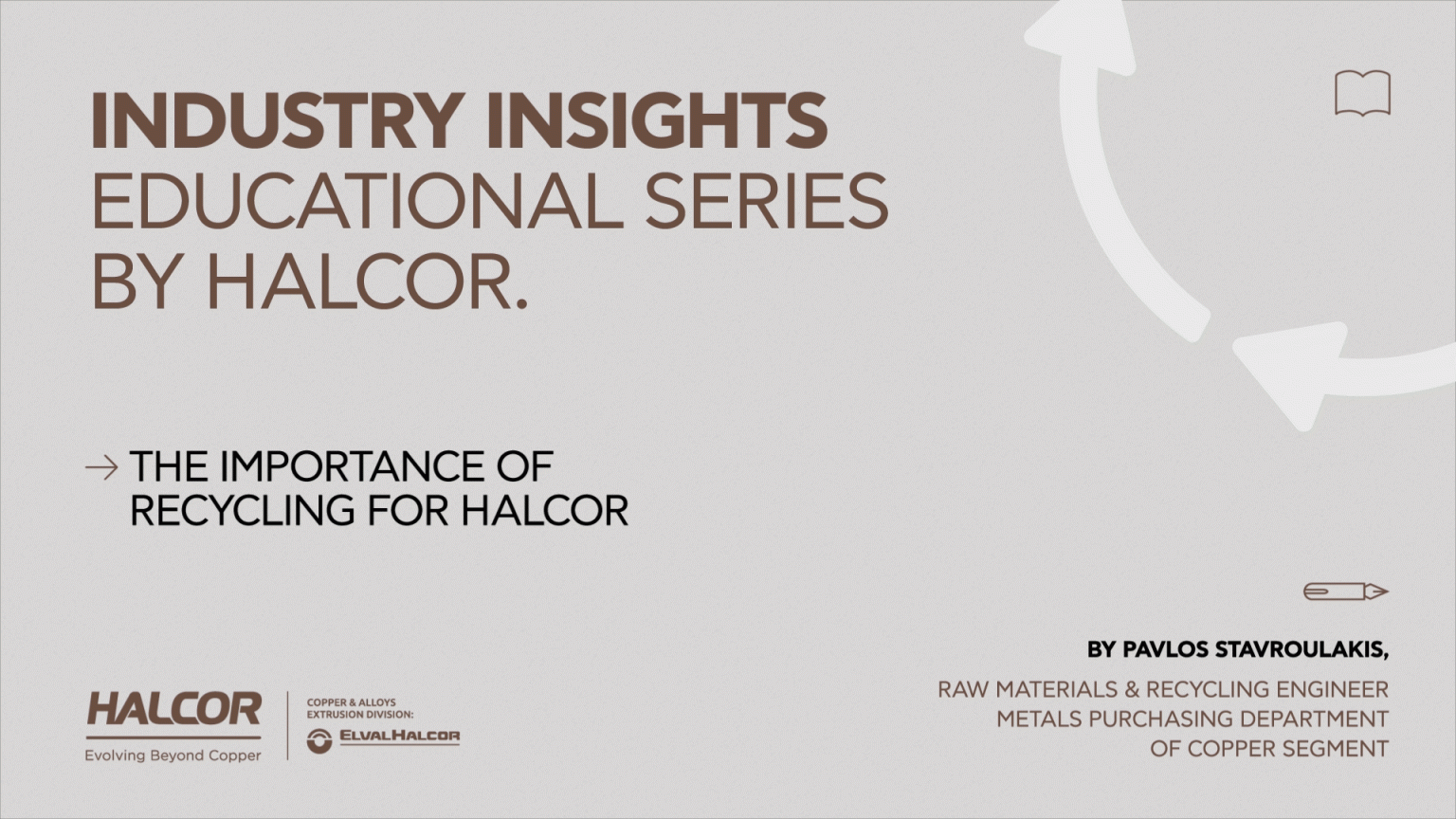19-12-2023
Our holiday video
HALCOR
31-03-2025
At HALCOR, recycling is not just a process, it is a core part of how we operate.

In recent years, an increasing portion of the copper we use comes from recycled scrap. In this context, we continuously seek innovative methods to enhance recycling processes, ensuring that every step supports both our business objectives and environmental commitments.
Copper is one of the few raw materials that is 100% recyclable, and its recycling offers significant benefits. For instance, producing copper from scrap requires 85% less energy compared to mining new copper, while every ton of copper products made from scrap results in approximately 65% lower CO₂ emissions. This is because copper extraction involves multiple energy-intensive processing stages, while producing primary copper from ore involves several energy-intensive processing stages, compared to scrap, which requires significantly fewer steps. By reducing the need for mining, we significantly contribute to minimizing environmental damage.
However, the benefits extend beyond the environmental aspect to have a substantial economic impact. As discussed in the previous issue, ElvalHalcor and other manufacturers do not speculate on metal price fluctuations but instead aim to balance their purchases and sales through LME (London Metal Exchange). The use of scrap adds an additional strategic dimension, as its price depends not only on the LME copper price but also on its copper content. Since scrap typically has lower purity compared to cathodes, its use requires specialized personnel to assess its quality, along with dedicated equipment for processing, sorting, and blending with purer material to make it suitable for use in the foundry. It requires specialized handling and mixing with cathodes to meet customer requirements. The foundry plays a crucial role in ensuring that the final product meets strict chemical and mechanical specifications demanded by our clients. Consequently, the effective utilization of price differences between scrap and cathodes creates opportunities to reduce raw material costs and improve profit margins, directly impacting financial performance.
At the same time, the European Union is significantly promoting recycling through the Critical Raw Materials Act, aiming for 25% of Europe’s copper supply to come from scrap by 2030. However, our production already places us well ahead of these requirements, as we may use up to 70% scrap for certain products, thanks to our strong supply network and effective raw material processing capabilities. This proactive alignment not only exceeds upcoming regulatory targets but also strengthens our reputation among customers and partners who prioritize sustainability.
Smart raw material management is crucial for our sustainability. It is essential to strategically choose when and how we purchase and process scrap, as this directly affects our competitiveness and financial performance. In an ever-changing environment, this is not just an advantage, it is the foundation of our long-term growth.
This highlights the important role each one of us at HALCOR plays in achieving all the above. Through our joint efforts, we turn a demanding environmental challenge into a tangible, everyday success. By collaborating and understanding the significance of every contribution, we ensure that our commitment to sustainability is not just a goal but a shared reality that benefits all stakeholders.
Pavlos Stavroulakis
Raw Materials and Recycling Engineer
Metals Purchasing Department of Copper Segment